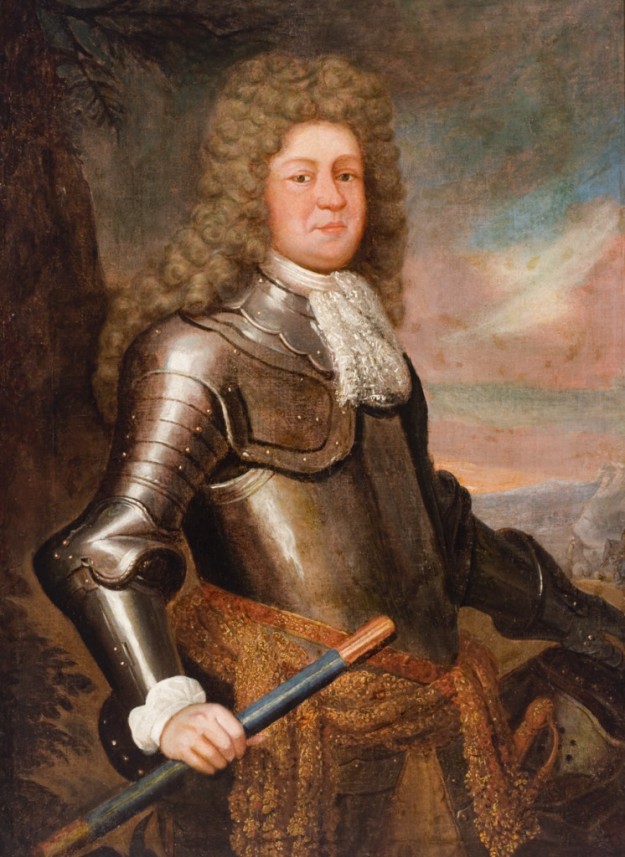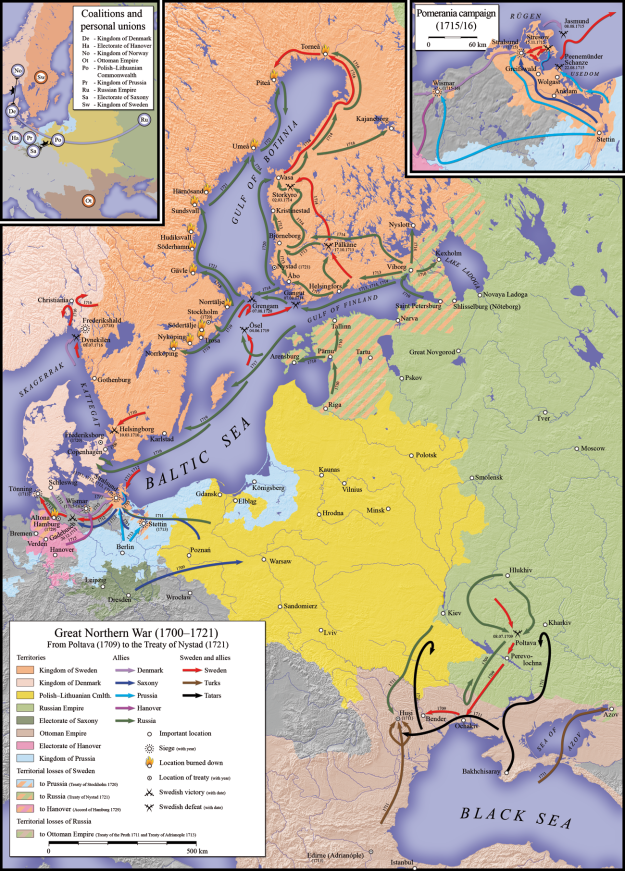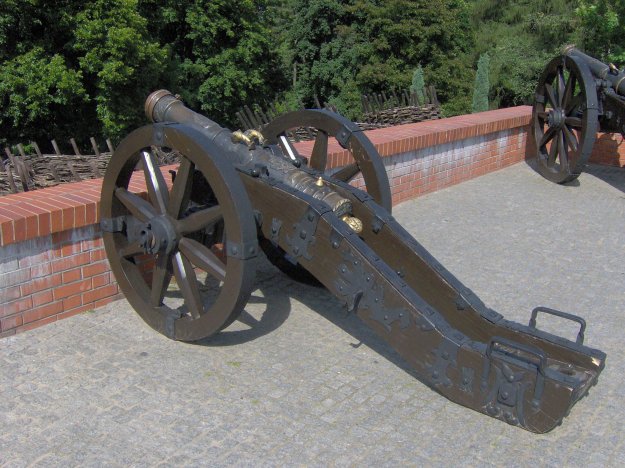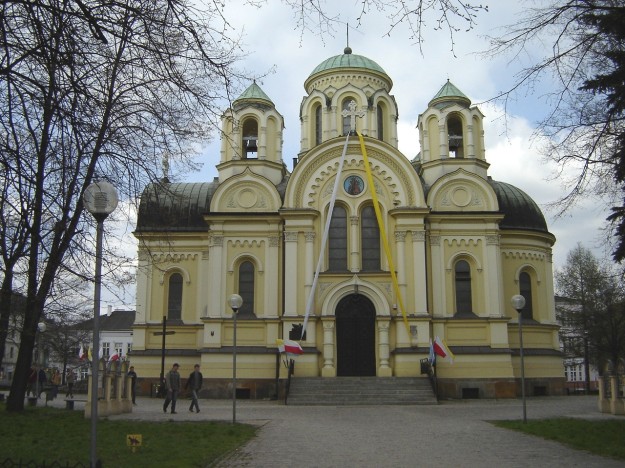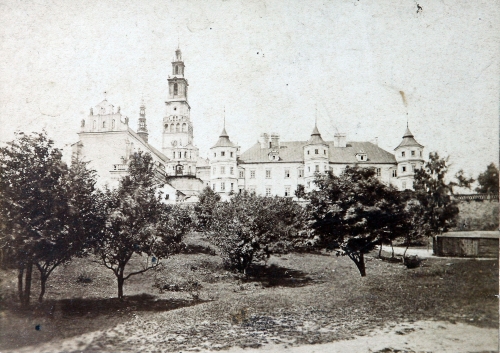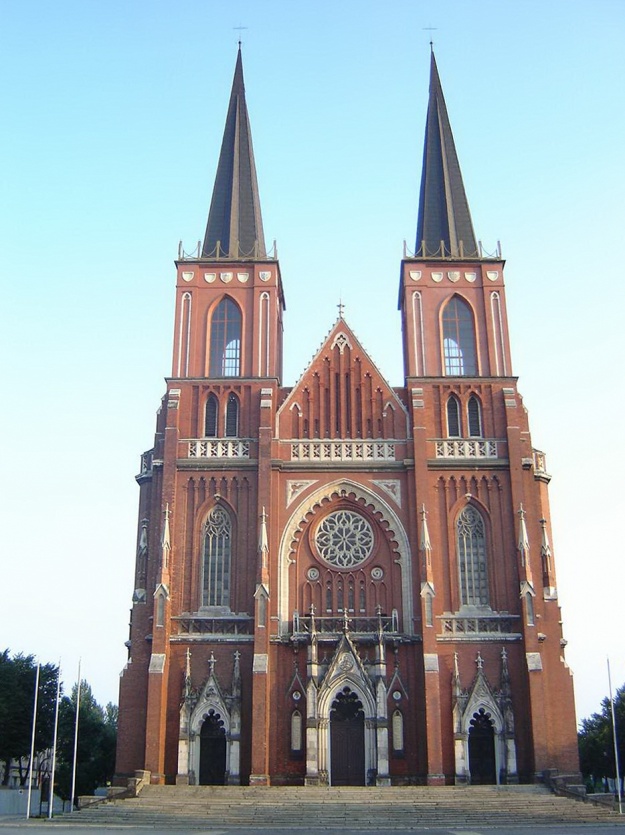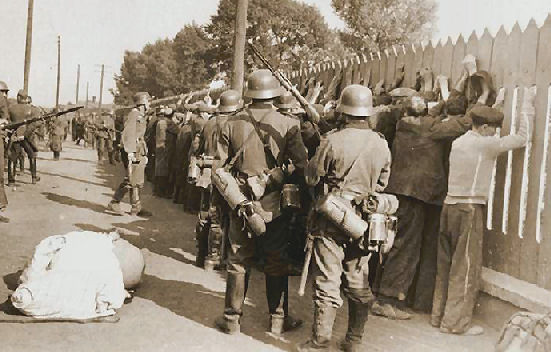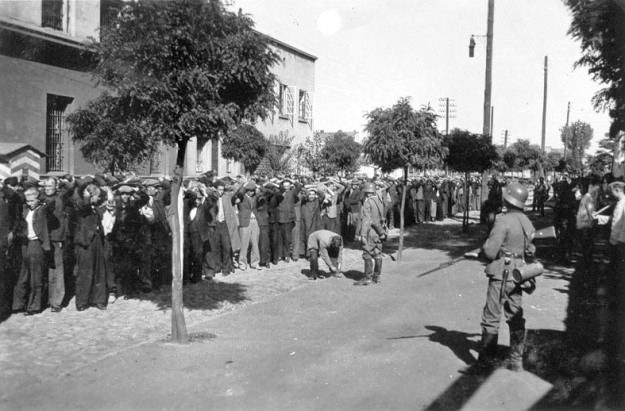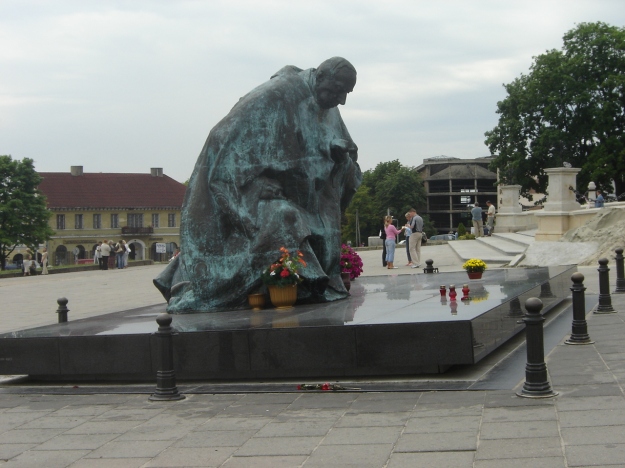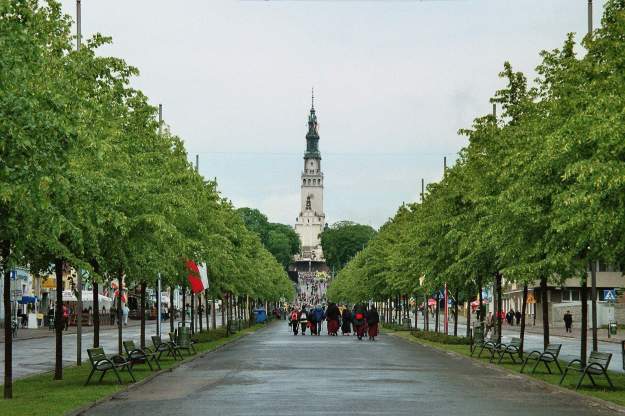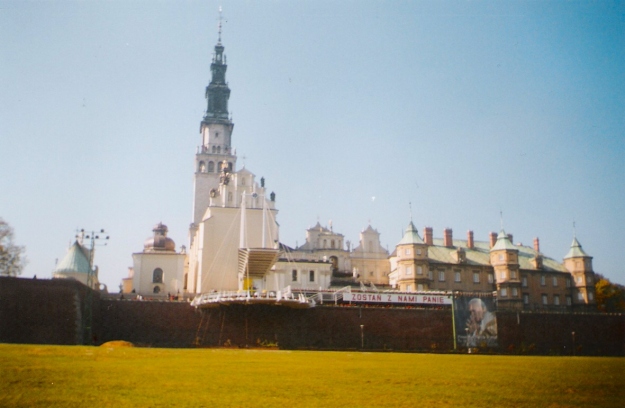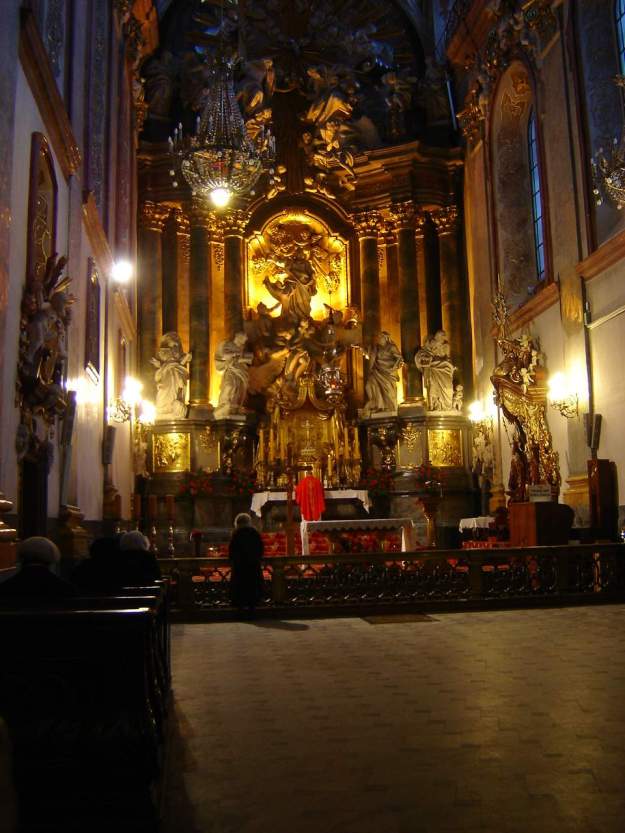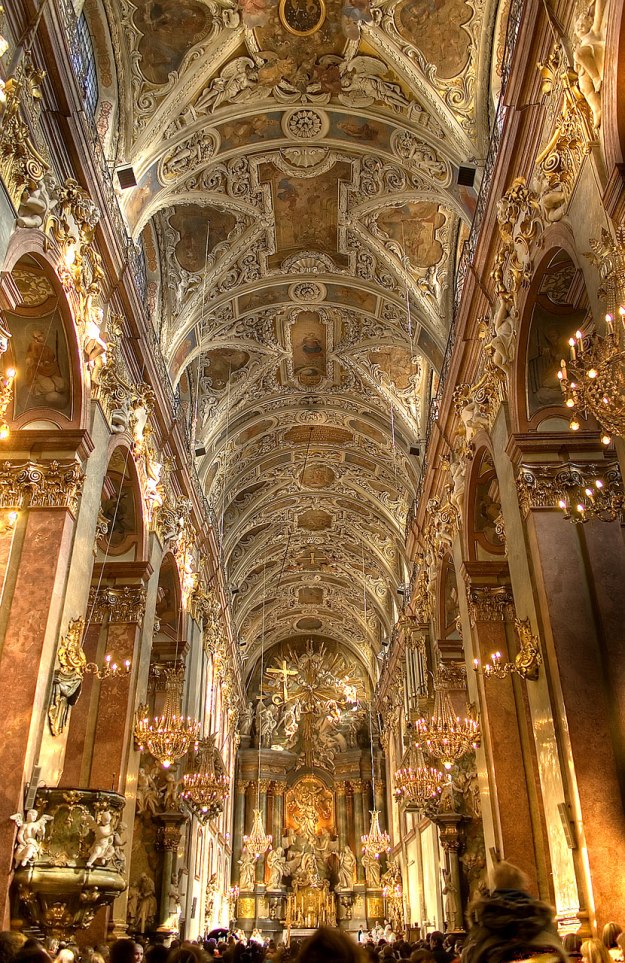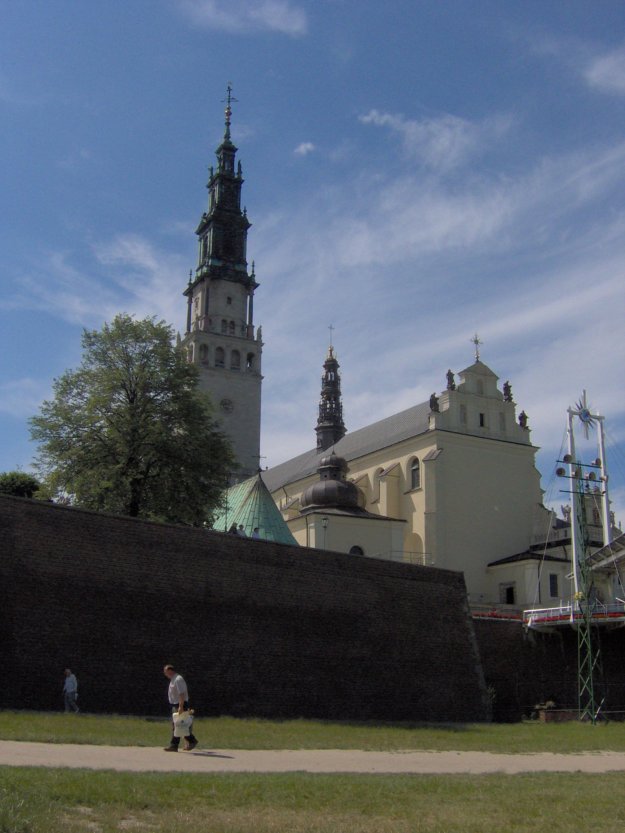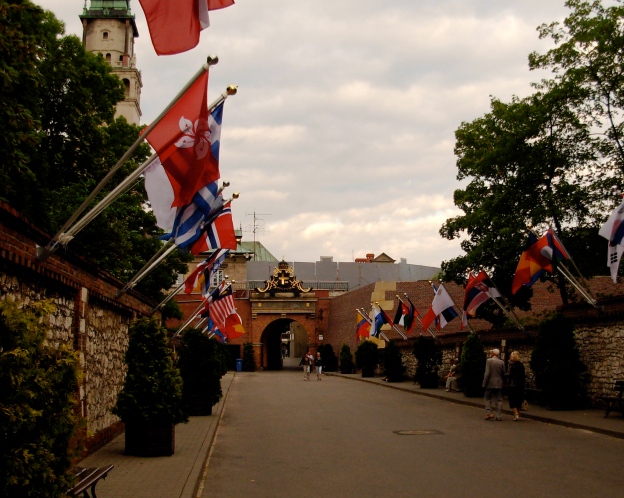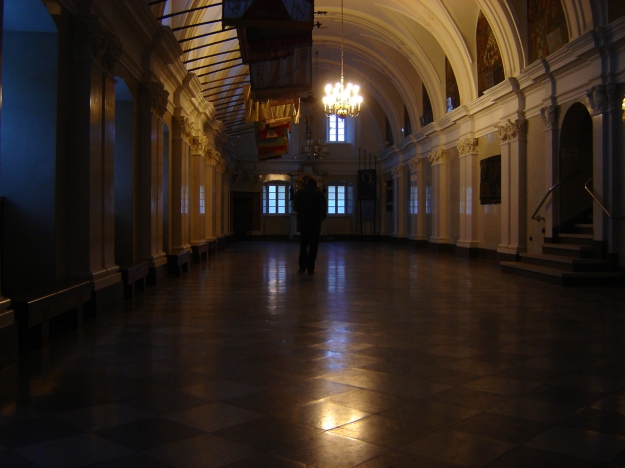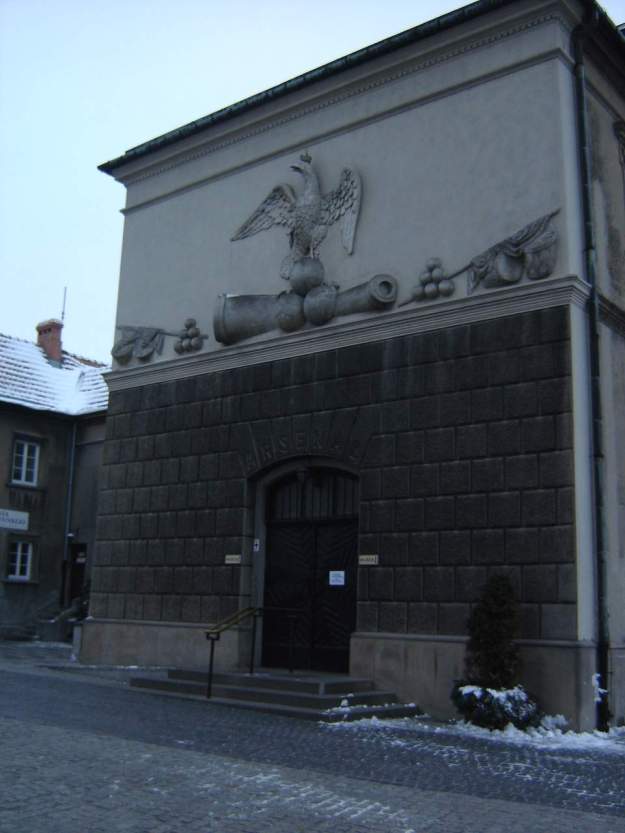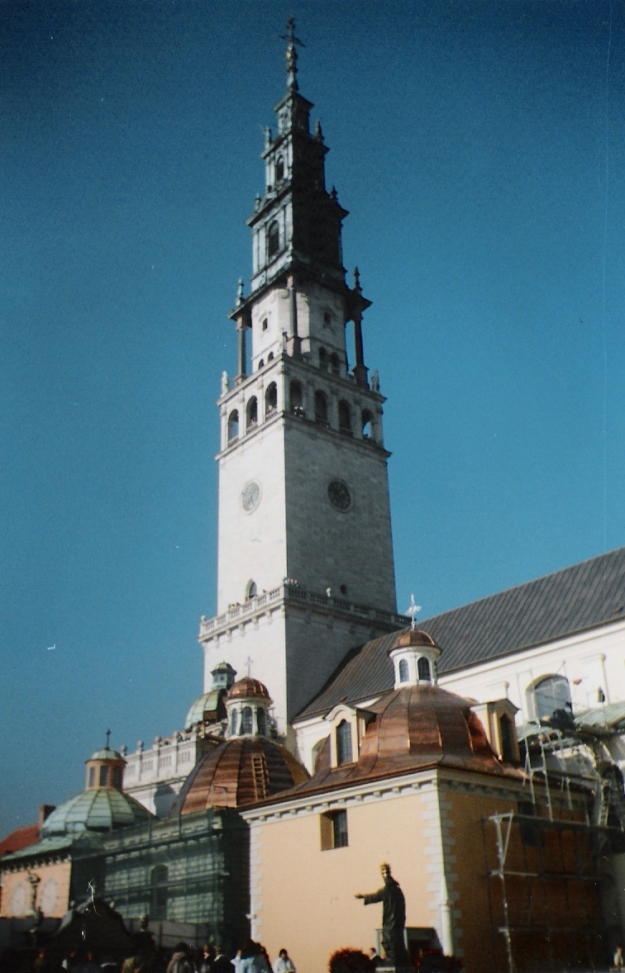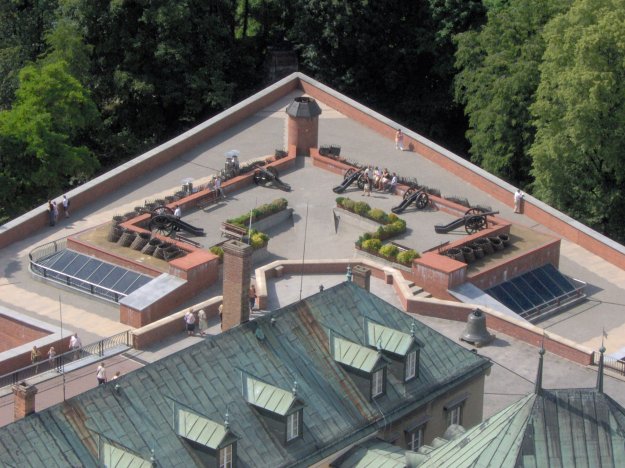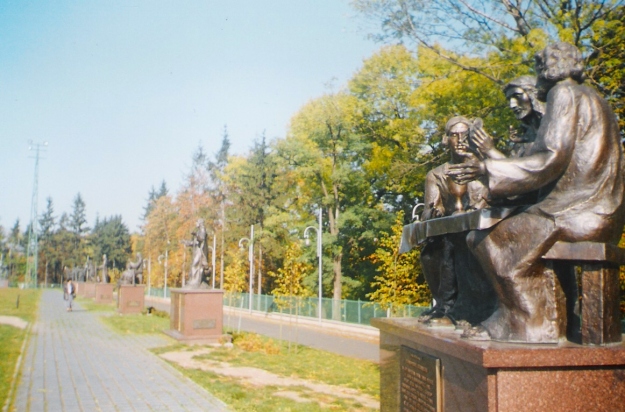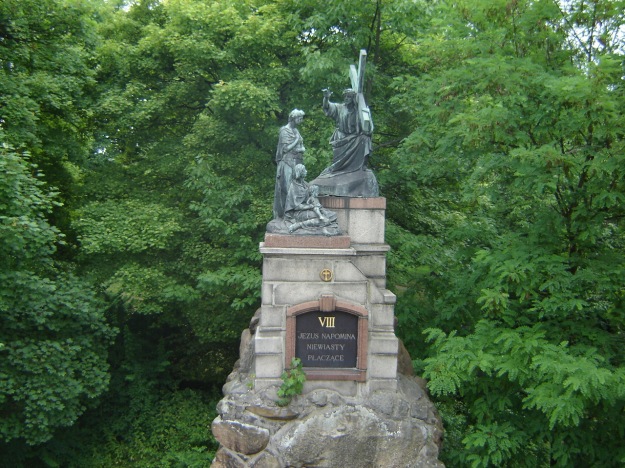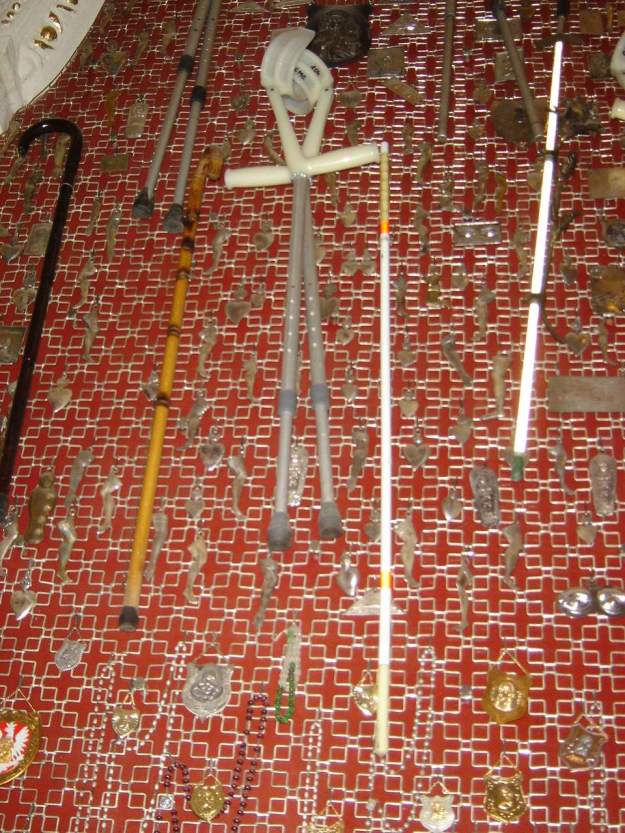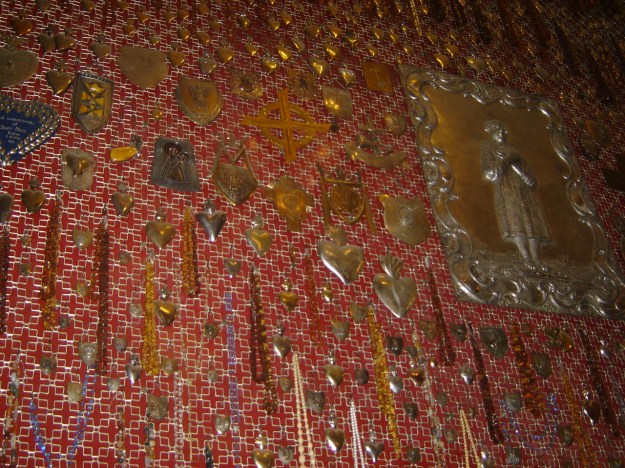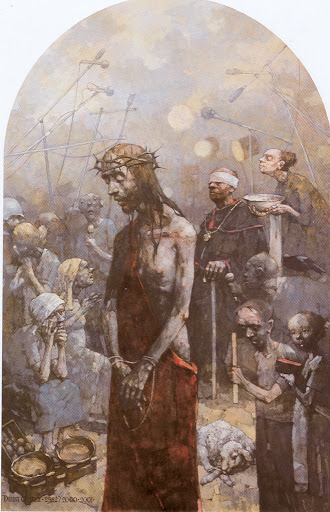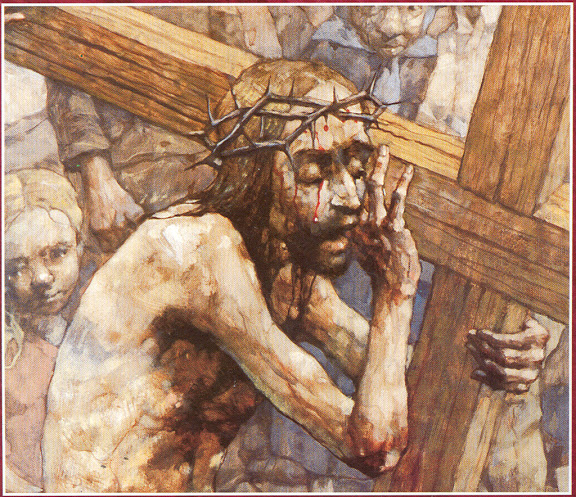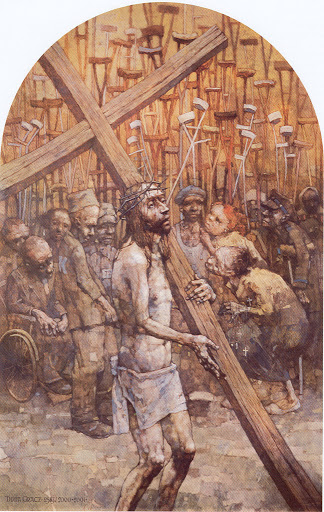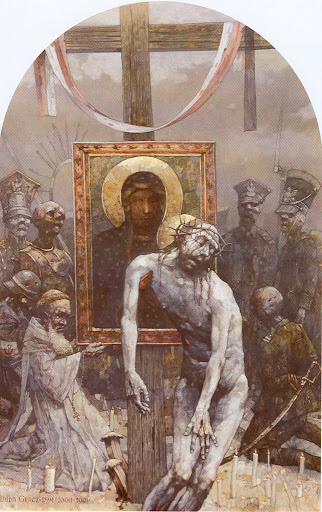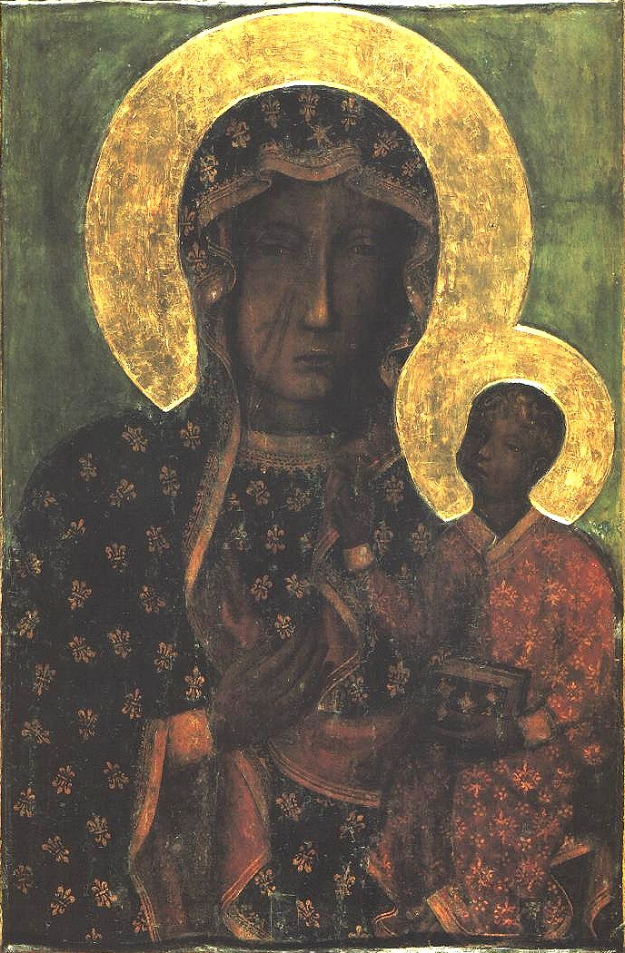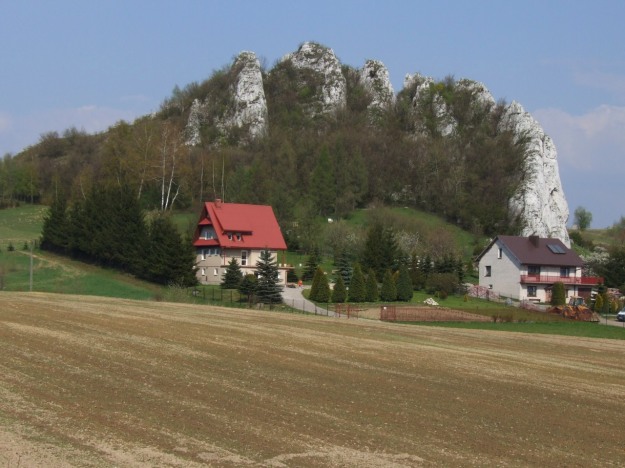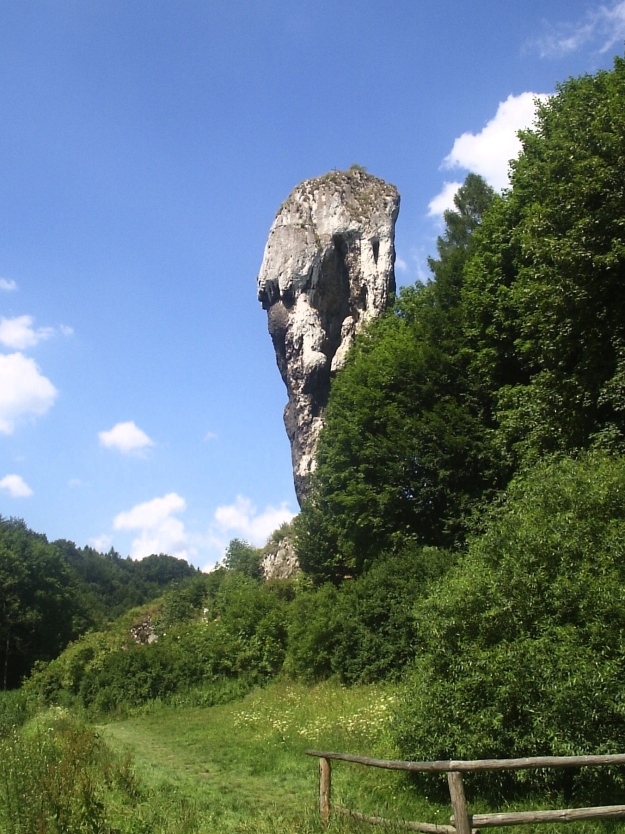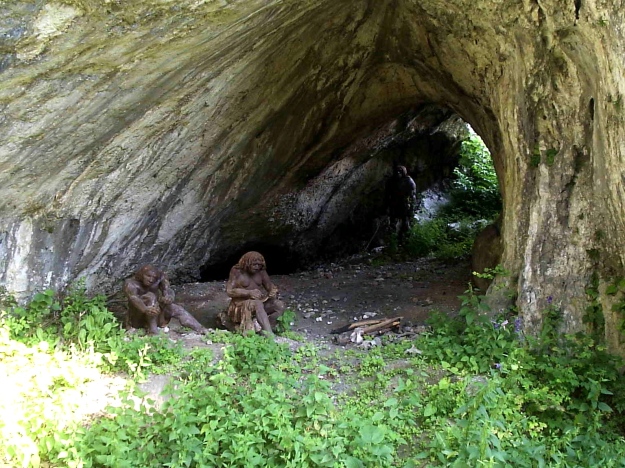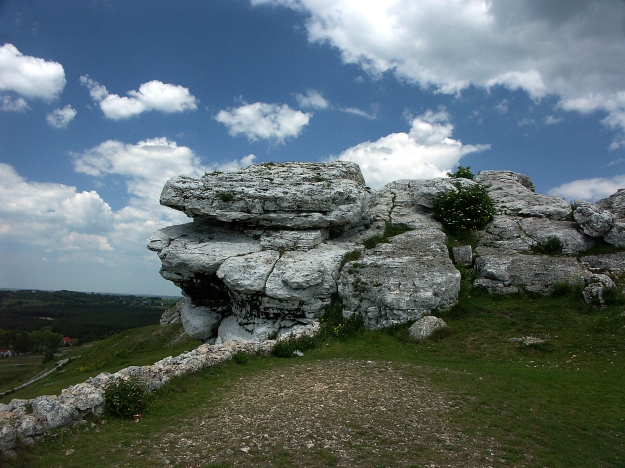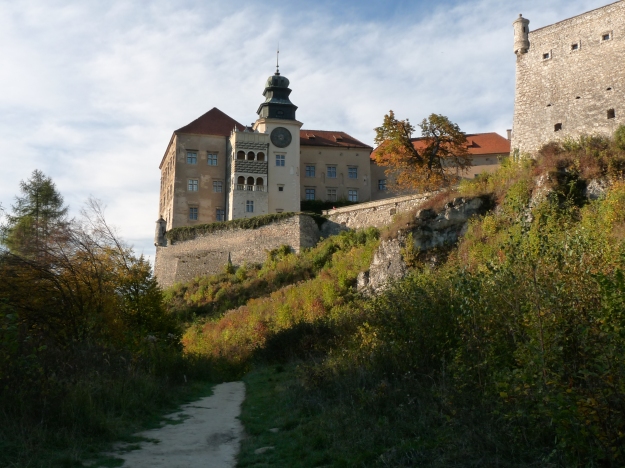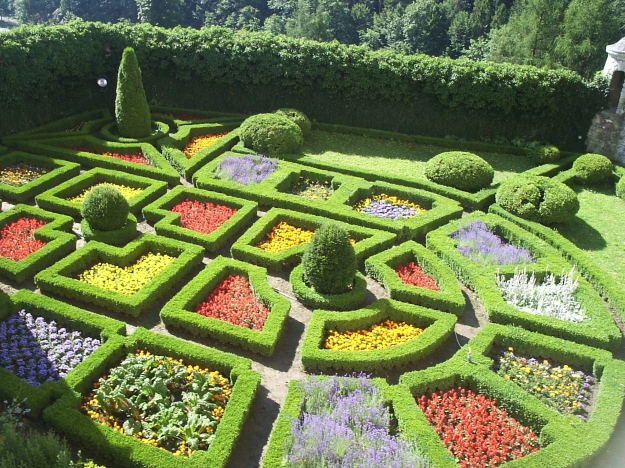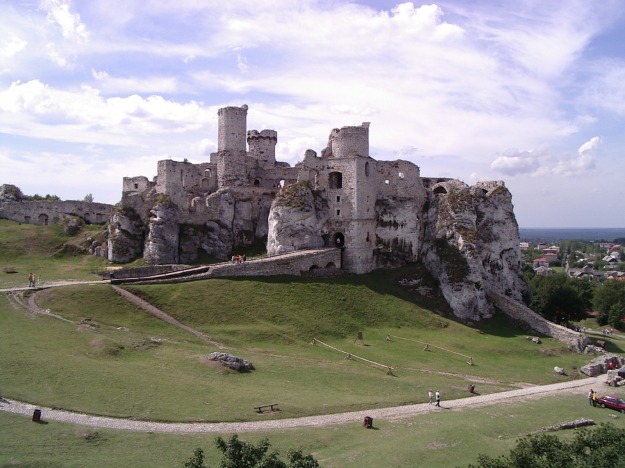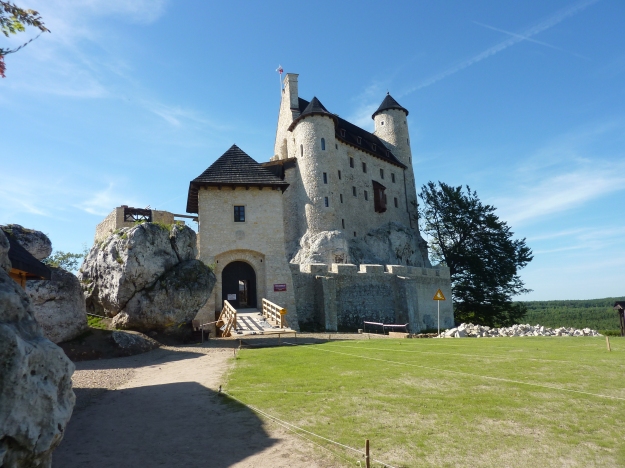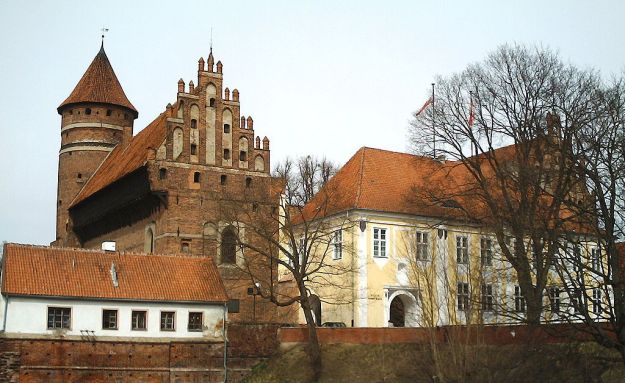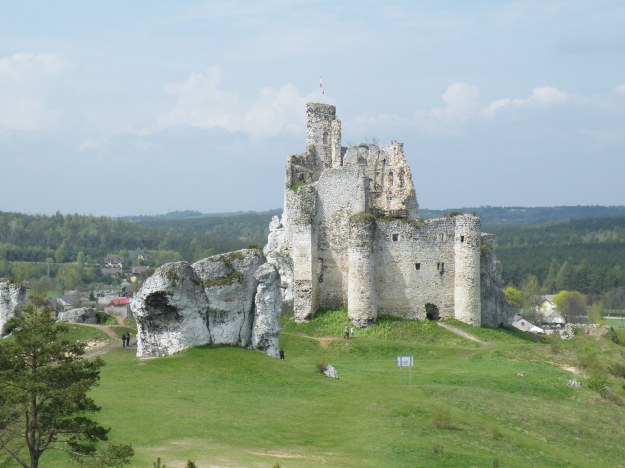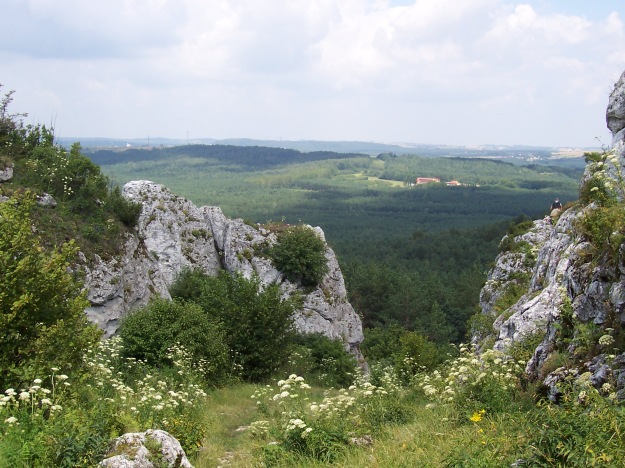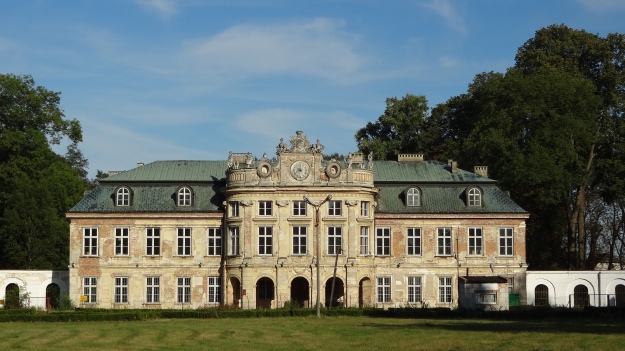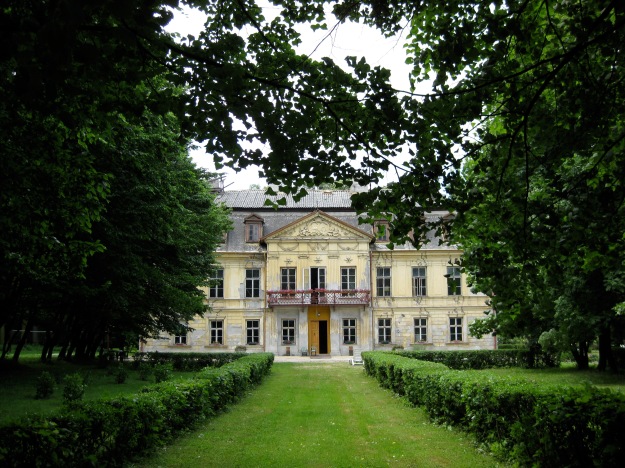About Częstochowa
Częstochowa is a city in the northern part of Silesia. It is some 75km – an hour’s drive – north of Katowice (a bit over 60km from the airport).
Archaeology has placed the first settlement in Częstochowa in the late C11. By 1220 it was a property of the Mstów monastery (these days Mstów is a fairly unimportant village about 13km east of Częstochowa, but in the early C13 it was the regional capital and home to a large monastery. Despite being destroyed by Mongols several time (last raid in 1266) it remained an important town until just after the Third Partition when the church was destroyed by the Prussians and in 1801 the town was burned in a fire).
The village of Częstochówka was located on the hill on which Jasna Góra Monastery was later built. Late in C13 the village gained a Roman Catholic church. Although local rule was based in the nearby Olsztyn Royal Castle, Częstochowa was a busy place, lying on a busy merchant road from Lesser to Greater Poland.
In 1382 the Paulist monastery of Jasna Góra was founded by Vladislaus of Opole, prince of Upper Silesia. Two years later the monastery received the famous Black Madonna icon, and the town grew as a result of the growth of pilgrimage to the monastery on the hill. In 1504 the village received permission to charge tolls on the bridge over the Warta river; in 1508 permission was given to organise one fair a year, increased to three in 1564 and to six in 1639 – despite the abandonment of 78 houses (from 399) following a plague in 1631.
By the time of the invasion by the Swedish in 1655 the monastery has turned into a Dutch-style fortress but that did not stop the destruction of most of the town by Swedish soldiers. Although even by 1680 there were still houses in ruin, the monastery prospered and in 1670 it hosted the marriage of Michał Korybut Wiśniowiecki (ruler of the Polish-Lithuanian Commonwealth, therefore King of Poland and Grand Duke of Lithuania) and Princess Eleanor Maria Josefa of Austria.
In 1682 the monastery and village celebrated the 300th anniversary of the Black Madonna, which brought pilgrims from all over the Commonwealth and Silesia. At about the same time, or a little later, the first Jews settled in Częstochowa
Just a few years later … more trouble with the Swedes. The town was captured in 1702, 1703 saw a siege of the monastery followed by return visits in 1705 and 1709 when, having failed to capture the monastery (again) they looted the town then set it on fire.
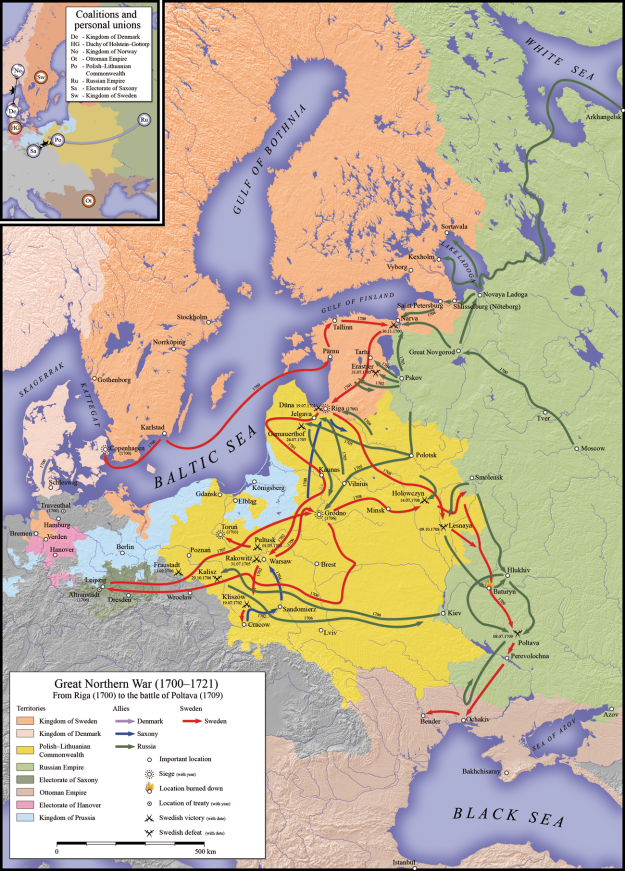 Amongst other things, look how much land the Swedish Empire controlled, how close Kiev is to what was then the border of the Commonwealth (Lwow was a major Polish city at the time) and how close the Commonwealth got to having a Black Sea coast!
Amongst other things, look how much land the Swedish Empire controlled, how close Kiev is to what was then the border of the Commonwealth (Lwow was a major Polish city at the time) and how close the Commonwealth got to having a Black Sea coast!
In 1769 the monastery was taken by rebels of the Bar Confederation then almost immediately besieged by Russian forces, who gave up in 1771.
Częstochowa was seized by Prussia in the Partitions (1793) then became a part of the Duchy of Warsaw (Napoleonic Wars, 1807), besieged by the Austrians in 1809, then found itself in Russian-controlled Congress Poland in 1815 where it remained until World War 1.
Under Russian rule, Częstochowa grew in size and importance. Connected with the rest of Europe by the new Warsaw-Vienna railway in 1846, the second half of C19 saw investment in a steel mill, weaveries and paper factories. By the end of C19, Częstochowa was one of leading industrial centres of Russian Poland. And, according to the 1897 Russian census, 12,000 of its 45,000 citizens were Jews.
The early years of C20 saw activists in Czestochowas and other important cities of Congress Poland attempt to overturn Russian rule (Revolution in the Kingdom of Poland (1905–1907)).
In August 1914 Częstochowa was abandoned by the Imperial Russian Army and occupied by the German Army which held it until 1918. The monastery was, from April 1915, under the control of the Austro-Hungarians. During WW1 factories and workshops in the town were closed, as access to the former Russian markets was lost, and about 20,000 people left to go to Upper Silesia and other provinces of the German Empire.
Following WW1 Częstochowa was a centre of support for Silesian Poles fighting in the Silesian Uprising – a rebellion by the people of the province against German rule (remember that between the wars the borders of Poland were both farther east than they are today). The city remained poor, and unemployment remained high. Thousands more workers left, to seek employment elsewhere (many in France). However, matters improved in time and by 1939 the population had grown to 138,000, making Częstochowa the 8th largest city in Poland.
The Wehrmacht entered Częstochowa on 3 September 1939, the city was named Tschenstochau and it was incorporated into the General Government. Killings began the next day, as the German plan for the cultural and physical extermination of the Polish nation got under way.
Resistance forces operated in and around the city, and for a brief period it was capital of the Polish Underground State. Autumn of 1944 saw a major effort to fortify the city, but after one day of fighting the German forces withdrew on 16 January 1945.
During the occupation some 45,000 of Częstochowa’s Jews were killed.
Significant modernisation and expansion of the steel mill and increased tourist (pilgrim) traffic saw Częstochowa grow post-WW2. More recently, Pope John Paul II made several visits to pray before the Madonna and Pope Benedict XV1 has also visited the city.
Today Częstochowa is one of the main tourist destinations of the are, attracting several million visitors and pilgrims each year – most coming to see the Black Madonna of Częstochowa at the Jasna Góra Monastery.
Jasna Góra Monastery
The monastery was founded in 1382 by Hungarian monks and only two years later it received what was to become one pf the most revered religious icons in Europe. Later fortified (and even successfully defended) the oldest parts of the monastery today date to a little later, from C15.
It has for centuries been the heart of pilgrimage in Poland and today, the complex is one of the most important sites of the worship of Our Lady.
The Church of the Finding of the Holy Cross and the Nativity of the Virgin Mary was built at the beginning of C15th. Both the church and the Holy Virgin Mary Chapel (Our Lady Chapel), which had been founded earlier at the end of the 14th century by King Władysław Jagiełło and which now houses the Miraculous Icon, were joined with a cloister belonging to the original monastery complex. The cloister itself was joined with the church.
The present-day basilica is a monumental work of Baroque art built in 1692-1695 and 1706-1728. The vaults of the nave, chancel and aisles are covered with Karol Dankwart’s frescoes from the late 17th century surrounded by a splendid stucco decoration. The theme of the chancel frescoes refers to the history of the Finding and the Triumph of the Holy Cross, while the frescoes in the nave and aisles present the glory of the Virgin Mary and Her chastity.
The high altar depicts the scene of the Assumption of the Virgin Mary – the most central part represents the scene of the Assumption, with the Virgin Mary rising into heaven, and the top part – the Trinity awaiting her with the crown of glory. Above the high altar hangs a silver lamp founded by Queen Maria ‘Marysieńka’ Sobieska. There are three 17th century chapels adjoining the southern aisle: Saint Paul the Hermit’s (also called the Denhoff Chapel), and a two-level chapel: of the Most Sacred Heart of Jesus (at the top), and of the Saint Relics (at the bottom). The basilica holds large and magnificent organs with 105 organ stops dating back to 1956.
The Holy Virgin Mary Chapel is the heart of Jasna Góra. Itdates back to the beginnings of the Middle Ages. Initially the Icon had been placed in a small wooden church given to the Pauline Order by Prince Władysław Opolczyk in 1382. In 1642-1644, the gothic chapel was extended by a Baroque edifice with a nave and two aisles.
There are five altars in this part of the chapel – especially important is the altar of the Crucifixion of Jesus with a precious C15 crucifix made in the school of Veit Stoss (Stoss was responsible for the world-famous altarpiece in St Mary’s, Kraków). .
A gothic chapel is separated from the rest of the church by a grating made in Gdańsk in 1644. In the chancel, there is an ebony Baroque altar founded by Jerzy Ossoliński, the Great Chancellor of the Crown.
The silver curtain that covers the Miraculous Icon was made in 1673.
The third part of the chapel was completed in 1929 on the location of an 18th century vestibule. The pillars and walls of this building are covered with gorgets and votives, mainly from the Polish soldiers serving on the front lines all over the world, as well as from the martyrs who died fighting for free Poland during Communist period.
The vaulted Knight Hall was initially designed as a representative salon and a debate room for the convent where its assemblies, chapters and ceremonies with notable guests including rulers and various church and secular dignitaries, were held and known as the Room of Theological Dispute
Located in the very centre of Jasna Góra, the Arsenal building is distinguished by the enormous White Eagle sitting on one of the three large cannonballs above the doors to the main hall. The Pauline monastery has always been exposed to danger. One of the most important events in the history of the Miraculous Icon of Our Lady was the attack of the monastery by the Hussites and the desecration of the image in 1430 (according to one theory, that is when the score marks in the Madonna’s face were made).
The Arsenal was built in the second half of 17th century. On its lower floor, there is a well preserved vaulted hall. The façade is decorated with symbols of independent Poland, as well as pieces of weaponry. The original decoration was destroyed during the partition of Poland, when the monastery was held by the Russian army, and was reconstructed at the beginning of 20th century.
516 steps will take you to the 5th floor of what was at one time the highest tower in Poland (106m 30cm). The bottom part of the present day tower, the fifth in the history of the sanctuary, dates back to 1714, while its top was added at the beginning of the 20th century. The tower was completely restored in 2000.
The clock above the tower’s first floor is equipped with the so-called “Carillon”, or chime with 36 bells playing out Marian music every 15 minutes, or Christmas carols and Easter songs during other periods of the liturgical year. There are four statues in the corners of the middle floor, including the one of Saint Paul the Hermit, Saint Florian, Saint Casimir and Saint Jadwiga, Queen of Poland.
The fifth floor is decorated with the statues of the doctors of the church including Saint Leo the Great, Saint Gregory of Nazianzus, Saint Augustine and Saint Ambrose. The spire is topped with a crow with a leaf of bread in its beak, as well as a metal flag with a monogram of the name of the Virgin Mary. At the very top there is a crucifix whose lamps, which are lit at night, symbolize the light and might of this holy place.
The permanent gallery of the Museum of the 600th Anniversary displays artifacts created by the Paulines of Jasna Góra in the 17th and 18th century. The central display case contains three out of eight dresses belonging to the Black Madonna. Also worth a look are the votive offerings presented by the inmates from concentration camps in Dachau and Auschwitz and the vast collection of musical instruments of Jasna Góra Ensemble
The square, Plac przed Szczytem, contains a statue of the Virgin Mary and is a venue many important celebrations and gatherings.
St. Roch’s Bastion was an integral part of Jasna Góra fortress. It was erected in years 1624-1639 and extended between 1678 and 1681. It was then when the original, smaller bastion was enclosed with a slightly larger one. The rest of the space was filled in with debris and soil.
Since 1991 St. Roch’s Bastion has been under restoration. The works have resulted in the removal of upper layers and the discovery of original walls which witnessed a famous Swedish siege during the Deluge in November and December of 1655. At present a central part of the Bastion is opened to the public, being one of the planned parts of the permanent arrangement of the new Treasury.
The Way of the Cross, located in the monastery park which is walled-in from three sides by the Sanctuary (former moats of the fortress), was designed by Stefan Szyller and built in years 1900-1913. 14 figures casted in bronze were created by sculptor Pius Weloński.
In the years 1649-53 a special room over the sacristy was erected whose function was to serve as a treasury. Its current interior decor was designed by Adolf Szyszko-Bohusz at the beginning of the 20th century. The treasury is a home for a collection of votive offerings, some of which are of great artistic value/
The work of art presented by its author Jerzy Duda Gracz and consisting of 18 pictures that form the Jasna Góra Golgotha was placed in an enclosed space – the upper level of the entry to the Our Lady Chapel, the so-called extension, which was redesigned in 1929-1933.
The National Memorial Chapel is located in the 17th century bell tower situated between the south wall of the Basilica and the north wing of the communion cloisters. At present it houses a mausoleum with national treasures and mementoes: funeral urns with ashes of the dead and those who died for their country. There are also national memorial plaques as well as urns with the soil stained with the blood of the workers from Poznań, Radom, Gdańsk and Silesia, and the urn with the soil stained with the blood of the blessed Father Jerzy Popiełuszko. The mausoleum was blessed on the 3rd of May 1989.
The Black Madonna of Częstochowa
I’ve got to admit that, for me, the icon is like Caroline at the Grand Canyon. What’s that, you ask? Caroline and I went out for several years in the late 80s. We were in the western USA on holiday. I’d driven from just outside Death Valley for many hours … past Las Vegas … over the Hoover Dam and eventually parked up in a car park on the south rim of the Grand Canyon. We climbed stiffly from the car, stretched and walked through a little strip of trees … and there it was spread out before us. As we watched the different colours as the sun went down, the different layers of the Canyon walls going dark, the tops of the mesas shining then blinking out, hearing only the buzz of the insects and the ping of cooling engines. Caroline turned to me and asked “Do you mean to tell me we drove all that way just to see this?”.
According to tradition, the icon of Our Lady of Częstochowa was painted by St Luke on a cedar table top from the house of the Holy Family. What we DO know is that the icon was at the monastery by 1384 (or 1382, some sources differ).
Whatever its origins, we know that the icon was restored after being badly damaged by Hussite raider in 1430 – a process of restoration which caused some problems as the paint the restorers applied “simply sloughed off the image” and their solution was to erase the original image and to repaint it on the original panel, which was believed to be holy because of its legendary origin as a table top from the home of the Holy Family. Holy table top, Batman!
The Black Madonna is credited with miraculously saving the monastery during the C17 Swedish invasion. The monastery was The Siege of Jasna Góra took place in the winter of 1655 during the Second Northern War, or The Deluge as the Swedish invasion of the Polish-Lithuanian Commonwealth is known. . The month-long siege was ineffective, as a small force consisting of monks from the Jasna Gora monastery led by their Prior and supported by local volunteers, mostly from the szlachta (Polish nobility), fought off the numerically superior invaders, saved their sacred icon and, according to some accounts, turned the course of the war.
On 1 April 1656 King John II Casimir Vasa “crowned” Our Lady of Częstochowa as Queen and Protector of Poland in the cathedral of Lwów (remember, Lwów was then a very important Polish city).
Tourists and pilgrims flock to Częstochowa every year in their millions, along with Popes and politicians, all to visit the Black Madonna.
Local(ish) points of interest
Elsewhere in our files we’ve been a little scathing about Katowice as a destination. There are LCC flights in from the UK, but most tourists jump onto the bus and head straight to Krakow. We hope the story of Czestochowa has interested you, and we’d like to end by giving you some tasters of the other attractions around the city.
To the east of Częstochowa is an area called the Jura Krakowsko – Częstochowska, or Jura for short. It’s an area of amazing rock formations formed … can you guess? It stretches, as the name suggests, from Częstochowa to Kraków or, more accurately, Ojców National Park which is itself well worth a visit. 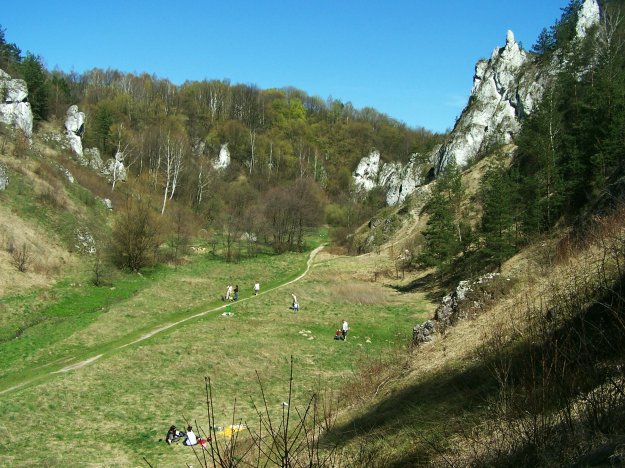
The Jura is a famous area for walking, and there you’ll find a number of castles:
Pieskowa Skała in Ojców
The ruins of Ogrodzieniec Castle (remember those wars with Sweden?)
The royal Bobolice Castle
The ruins of Olsztyn Castle (Swedes again) and Mirów Castle (abandoned 1787)
The area around Góra Zborów
Also in the area:
The Dembinski Palace in Szczekociny
And it’s smaller and simpler cousin, 6km away, the Palace at Nakło
Website: http://www.jasnagora.pl/en
